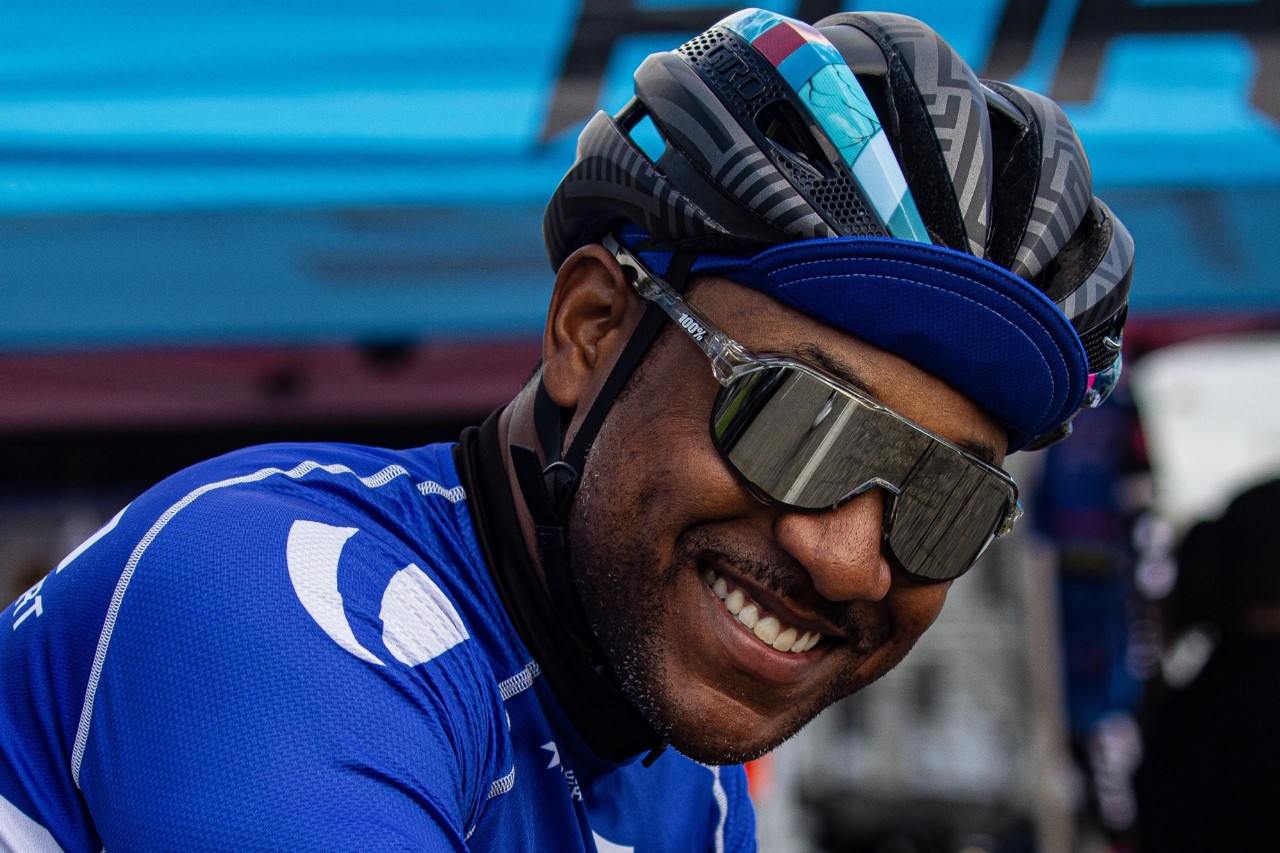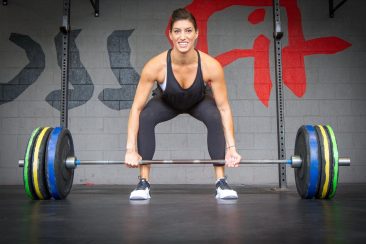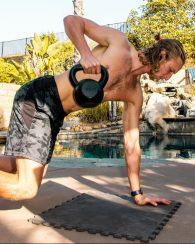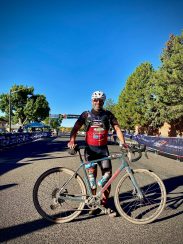Warm welcomes and thanks for joining in for another live chat with Graham on Instagram. This week Graham is joined with cycling ambassador, Crit Whit, to talk about his cycling adventures and the high hopes he has for it to take over the states. Read along as we enter a whole new world of cycling with Mr. Crit Whit.
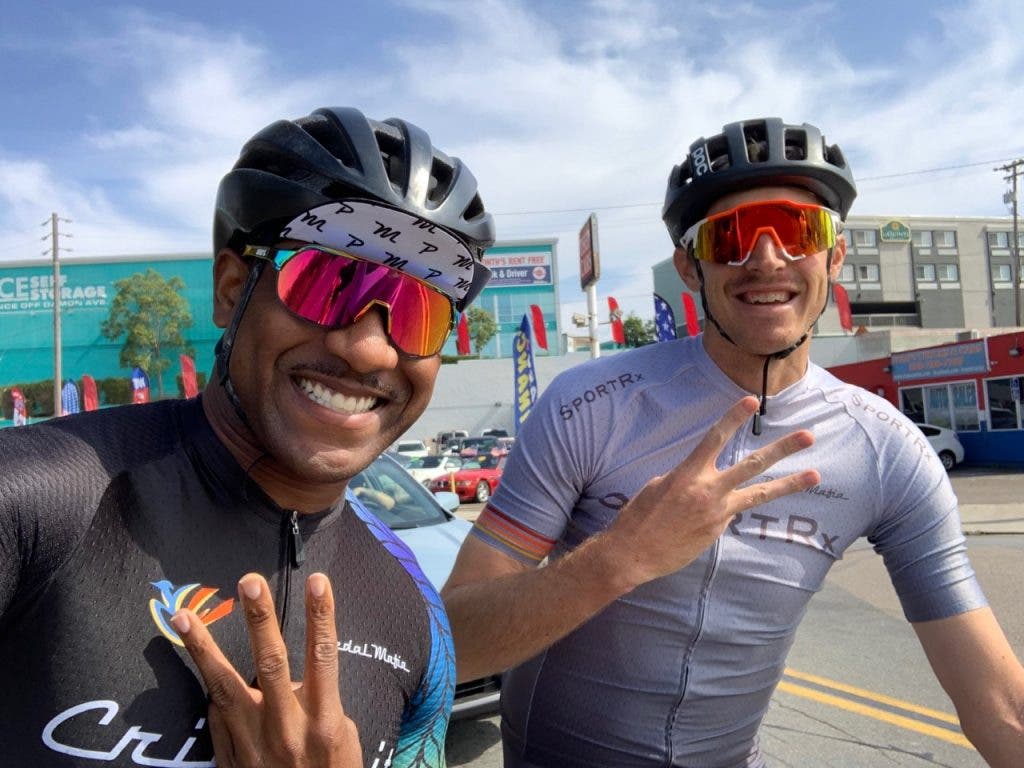
Pictured left to right: Crit Whit and Graham from a SportRx group ride in San Diego
G: So first things first, where did the name Crit Whit come from?
C: So I have to give a shoutout to Glenn, my first cycling mentor, I've always been big into names and the creative aspect of things. I've always been captivated by how companies come up with their names too. So being in the military, they're big on nicknames and I always went by Whit but one day I decided I wanted a nickname, in case this thing did take off. I wasn't expecting it to do what it's done but Crit Whit sounded so cool so I stuck with it. I mentioned it to Glenn and he said: "that's it if you don't use it, I will". So I changed my Instagram from "Get Fit with Whit" to "Crit Whit."
G: I love that, it's short and sweet, gets to the point. You love criterium racing and that's what you focus on so it fits perfectly.
C: Yeah Criterium Whitmire was not catchy at all. It was all part of the journey, I knew I wanted to share mine so it was the great changeup.
G: Let's talk about how you got into sports as a kid and what your first sports were?
C: Got into sports young, living in a single-parent home. My mom didn't remarry until I was 11 going on 12, which is interesting because my birthday is tomorrow, I'll be 39!
G: Happy Birthday!
C: Thank you! But instead of having the need for a babysitter, my mom sent me to play baseball and football. Those were the two sports that my mom threw me in and it helped her provide for me and her. Then when my mom got married we moved from Kansas City, Kansas to Kansas City Missouri then I was interested in wrestling. I was okay with it, tried it for a year but the issue I had with it, I was a defensive end in football, so the issues I had were consistently trying to gain weight for football and then lose it for wrestling. I got over that really quickly, so I left wrestling alone. In my sophomore year for baseball, I didn't make the team but then I was over it and focused on football. I started my junior year playing football and I almost gave that up too because my high school team was horrible. But Coach Donohoe saw me, started me and I was one of fifteen high school seniors to sign letters on intent to go to play college ball. I went on a partial scholarship to Missouri Western State College. So that's where it all started.
G: So you ended up playing football in college?
C: I did, I could have redshirted my freshman year but I Chose not to. Then my sophomore year I was going to medically redshirt because I had a torn cartilage in my knee but the issue was that I was having too much fun and I left school with a 1.15 GPA. So it was an academic suspension and I had 2 years off. That eludes to how I got into the military because the 2 years was up and wasn't sure if I wanted to go back to college or get out of Missouri and do something different. That story needed to be told actually because now I've been in the military for 18 years.
G: That's a long time to do that and I respect your service. Thank you!
So that transition from having too much fun in college to joining the military, I think that's great sometimes for some people. It makes you rethink life. What was it like for you to step from that sports scholarship life into the military?
C: For me, the transition was something I needed. I had so much fun in college but my mother was very protective. She was always asking me where I was going and who I was going to be with, very 50 questions and when I got to college it was very freeing. I could do what I wanted. But what I needed is something that has impacted me today and is who I am today. Wanting to impact communities and reshape lives. I love influencing people, getting involved with people. That's the aspect of the military I love the most. I love sitting down and having conversations and having that dialogue. Being able to be hands-on with people, not necessarily hammer and a nail because I do construction in the military. So when I came into the military from the rebellious lifestyle it put a head on my shoulders. It gave me the position of authority. I was responsible for the people underneath me and that gave me the chicken with no head and it gave me one. I made more concussion decisions, I had to be an example. I am responsible for the people beneath me and that made me more conscious of my actions. What I say and what I do. The military gave me order and structure. It taught me how to lead and inspire, to be a mentor.
G: That's sweet. Stepping back to talk about your mother, she sounds like she was a fantastic mother and I think she definitely set the foundation for who you were in the military and planted that seed (for leadership and responsibility) in you back then. That's awesome.
So getting into cycling, how did you get into the sport? Who inspired you to go down that route?
C: There is no who, but there is a what. Playing football and being active my whole life, then joining the military, I've done some podcasts and talked on the matter. But for me, it was the routine. Church, work, family, that's my life, I really don't do much. One period in time I wanted to do something that was outside of all that. Find a way to get away from that routine. So I wanted to get active again. First I wanted a motorcycle which my wife wasn't all for but I got the permit and she was okay with that and then a buddy of ours got into an accident and died on impact and the day it happened and I got word I knew my wife was going to be like "Nah Bruh" so I tore up the permit right then and there. So I was back to square one. Being in Mississippi a lot of people fish, ATV, and Hunt, and ain't none of that me. Then I had a deployment to Fallujah, Iraq for about 7 months. I remember sitting in the common area one day and I picked up a magazine called Bicycle Magazine and I was like "Man these bikes are nice" I was captivated. I was fascinated by how you could make lines into something very beautiful. I love the design. So I was captivated by the bike. But there were 2 problems. I was mid-deployment and those saddles were too small. I'm a man, I can't sit on something that small. So when the deployment was over and I finished my training and headed up to Maryland. Graham, left and right, I saw cyclists, everywhere I looked I saw them. I remember saying to my wife that I wanted a bike and the next thing I knew I was on bikesdirect.com, ordered my bike, and youtube how to put it together. That's how it started.
How I fell in love with cycling...I remember being on the 210, the intersection that goes from Waldorf Maryland to Indian Maryland and I was riding on the shoulder. There was no wind blowing and no cars passing, all I could hear was the chain cycling threw. That moment I was like "This is it" I was hooked at that moment. I haven't looked back since then.
Unfortunately, though Crit didn't ride again for another 5 years. While in his time in Maryland he didn't feel safe being a black man in Mississippi on the open road. He mentions at the time, Mississippi had one of the largest confederate flags in the states. He didn't ride again till he moved out here to California in 2017.
G: When did you finally move out here and start racing?
C: I got out her May '17, but I started riding October '09 and didn't start really cycling out here again until October '17. I didn't ride before that because my daughter would call me fat and one day she said it and I thought no more of that, she is not calling me fat anymore. Then the issue was that I had to start running and I knew I had to be less than 250 lbs to safely ride those wheels. So I had to get down from 266 to that and when I got down to 255 I could not wait any longer. I got on the bike, I named it Mistress, my second bike is named Serenity and my third bike is named Joy. So I started riding Mysterious, stopped at a coffee shop, saw my buddy Mills who races with Padyak Racing Team who I used to Race with and that's how the racing thing started. I asked him, he was in kit, in Starbucks "Are you a cyclist?" and he said, "Yeah duh". He started inviting me to the PRT rides and I wanted to race with them. They all kept encouraging me to race the Tour de Murrieta and I signed up. The rest is history.
G: Padyak Racing Team is based out of Chula Vista, which is in south San Diego. They're a great club with some very welcoming members, strong racers, and a few fun group rides. Definitely worth checking out for anyone looking for a group ride in San Diego.
Tell us about your weight loss journey? Where are you at now with your weight and how hard was it to get there?
C: For me it's hard, but it's not...you have to prep your mind to do it. It's hard until you make up your mind. Once you're locked in you can make up your mind to do it. For me, calorie counting is phenomenal because at the end of the day its all about calorie deficit. I don't care what type of fad diet you want to do, jenny Craig, sunset, paleo, vegan, whatever you want to do its about calorie deficit. As a cyclist, it was about jumping and seeing where I go. A friend of mine was a mentor and coach for me, he knew I had the power to lose weight. This year I did a video saying I wanted to get down to 200, or it being 2020 I wanted to get down to 220. 220 in 2020 that sounded good to me. I love catchy little things. I was serious about dialing back and I knew what it took to lose the weight. It was more about convincing my mind. I think the biggest thing is portion control. I grew up in a household where we didn't waste food. If you wanted to go out and play you eat everything on that plate. You grow up with this mentality of having everything on your plate, you have to eat. That's a very hard mentality to break when you're trying to lose weight. So I realized that if you fill up your plate, eat only half of it. If I made something for lunch I ate half and ate the rest for dinner. It was easy from there. I was really losing the weight and now with COVID I'm maintaining the weight, I'm 225 now. If I can stay in the 220s then when I start racing again I can be good.
G: What would you attribute that to? Are you following a training plan that you can suggest for other people?
C: Right now, for me, I don't think it's necessary to have a coach if you're not racing. I told Jeff (Crit's cycling coach) lets just put this training on hold until we start racing again and let me just enjoy riding my bike. That for me is what keeps me excited to get back into training. I'm just doing different rides and doing cool videos. Right now I'm telling people to just enjoy riding. If you want to go ride a century, do it. I don't want to get burnt out. A rest day is good but I never want to get to the point where I look at my bike and say I'm over it.
G: That's the whole reason to do it. Because you enjoy it. I think even if racing went away I'd still ride bikes because I love it and one of the things I love the most about cycling, is the cycling community. They've been very welcoming to me. I've met a lot of cool people, you're one of them. On top of that, you're doing good in your community. Which brings me to something you've mentioned already, rather a slogan you shared about a year ago, Impacting Communities, Reshaping Lives.
Talk about what that means to you.
C: So of course it goes with me being in the military and why I like that aspect of the job. I do like impacting people, influencing people, and being a part of their lives. I read in a book a while back that said: "This generation doesn't need to be lead, they need to be inspired." That stuck with me to inspire people. While its cool to see someone on top, there's always that but, how did you get there? So for me, Impacting Communities Reshaping Lives it was a longer version of something I had written out called Crit Whit Cycling and it was bigger than me, a vision, cycling that was bigger than me. It was something I wanted in high schools and bigger communities for kids to have the opportunity to go to college on scholarships for cycling. That was one desire of mine to impact communities so that it could be more than just riding your bike too and from your friend's house. Then reshaping lives, again when you're active you're changing your own life. Influencing, encouraging, and motivating people, having open dialogue and not being so quick to judge. Eventually, you will shape their lives because you will present something to them that may not have known. Cycling is just that, its something that is very misunderstood in America. You say cycling and people immediately think Tour De France and that's not just cycling, that's not all there is to it. So I've had a lot of voices influence me to ride, not just race but to get on the bike and to enjoy it.
I feel like cycling in the minority and black communities are very underrepresented. That's what I wanted to be a part of. To get bikes in schools for kids. Do things to inspire these kids to bring all these men and women of all colors together and how cycling is the thing that brings them all together.
Then my third vision would be to get cycling to be seen as a professional sport, on the levels of football and baseball. where towns and states have their own teams and clubs. That's the big vision, my heart from the beginning. That's all under the umbrella of Crit Cycling. But its really hard when you don't have any accolades. I don't have any trophies, I didn't get into cycling until I was 30. But here in America, it's hard to get that support. I get really big on passion. I think passion is bigger than accolades. People will pay for passion. I'm doing this because I truly love cycling, not for the accolades.
G: Dude. That passion came through really strong in those past 5 minutes. You know that, who cares if you haven't won anything. It comes from the heart and your love for cycling, and your vision to bring bikes to kids and building that community, that's the mission to shoot for!
Before we sign off here, talk about your brand a bit more, the companies you've been working with, and what you're working on now.
C: I have been grinding. My inspiration came from many places. I was moved by the killing of George Floyd on May 25th. So from there, the pinnacle point for me on that was not the knee on his neck, or that he was a black man in handcuffs. What was the pinnacle moment for me was this man calling out for his mother. When I found out his mother had died roughly 2 years prior, around the same time, that's what moved me. Growing up and not understanding the rules my mother made me follow, I hated my mom. Now to be a grown man and to cherish, love, and adore my mother, to see Mr. Floyd crying out for his mom. That touches me. Immediately I had to do something. I started 25 miles for justice. It was a campaign because I didn't want to go out and protest, I have a daughter, a son, a wife that I have to be mindful of. So I started the t-shirt campaign to support NAACP to fund where the shirts were paid for and all the sales went to them. I made no profits on this because this wasn't about me. I had people come out and support from all areas. I pushed that agenda to want to do more and there's a lot more but you'll have to stay tuned because there is more coming for 25 miles of justice.

